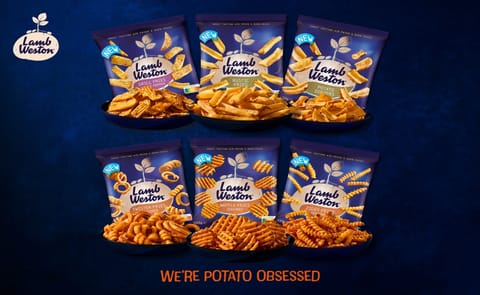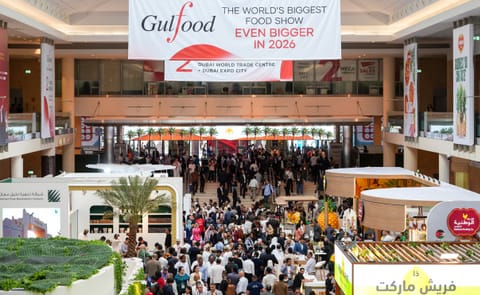Restaurant sustainability plate
Simplot suggests 24 Low-Cost Sustainability Tactics to Restaurants

The drive for greater sustainability in restaurants remains one of the industry’s hottest trends in 2022. The reason? It’s what customers want.
Fully 55% of U.S. consumers say they have shifted their purchase behavior to be more sustainable in the past five years. And research shows this trend extends to their dining choices:
Even small, low- or no-cost adjustments can have huge, cumulative impacts on your environmental footprint while reassuring your customers that you care, too.
Better yet, what’s good for the environment (doing more with less) is often good for your bottom line.
How can a restaurant practice sustainability?
Here are 24 low- and no-cost ways you can boost your sustainability performance:
If you want to see what’s possible regarding restaurants and sustainability, look no further than zero-waste restaurants. These operators are squeezing every bit of value from everything that comes through their doors, all in the name of sustainability.
While the leaders in zero waste are inspiring, every restaurant needs to find its own path to sustainability. Don’t let all of the possibilities overwhelm you! Start small and build your sustainability habits, procedures and infrastructure over time. Set goals and keep track of key metrics like energy and water use.
Bring your employees and patrons into the effort, explaining the why behind the what’s and when’s. Share your progress. Even modest efforts will yield enviable results over time—without breaking the bank upfront.
Fully 55% of U.S. consumers say they have shifted their purchase behavior to be more sustainable in the past five years. And research shows this trend extends to their dining choices:
- 66% of consumers say they’d pay more for sustainable restaurant practices.
- 70% of millennials and 72% of Gen Z adults said they’d be willing to pay extra for to-go orders to cover the cost of upgraded packaging.
- 47% would even consider changing which dishes they order based on their sustainability.
Even small, low- or no-cost adjustments can have huge, cumulative impacts on your environmental footprint while reassuring your customers that you care, too.
Better yet, what’s good for the environment (doing more with less) is often good for your bottom line.
How can a restaurant practice sustainability?
Here are 24 low- and no-cost ways you can boost your sustainability performance:
- Consider reducing your portion sizes or offering the option of smaller portions. In the effort to please customers, portion sizes have grown in the U.S.—sometimes beyond reason. Too often, that extra, uneaten food ends in the garbage. If reducing portions give you heartburn, consider offering an option for a smaller portion at a slight discount.
Need convincing? In one survey, 73% of customers said having accurate food portions to avoid waste was important to them, and 51% said seeing large amounts of food waste discourages them from ordering from that restaurant again.
- Compost uneaten food, food-soiled paper, and compostable packaging. The average restaurant generates 100,000 lbs. of garbage every year. By one estimate, restaurants can divert up to 90% of waste from landfills with a comprehensive composting and recycling program.
Set up a compost station in your kitchen and empty it into an outside container at the end of every evening. You may even find a service that will haul it away at no cost.
- Use frozen foods to reduce waste. Frozen products—like Simplot frozen potatoes, vegetables, avocado, fruit and grains—have already been shocked, peeled, sliced and diced, with much of the trim and inedible cellulose repurposed as feed for livestock.
This helps grow even more food, conserves landfill space and keeps all the energy, water and nutrients used to grow those crops from going to waste.
- Ask if they’d like water. Don’t just fill patrons' glasses automatically. You can save up to two gallons of water per glass from the unconsumed water and dishwashing.
- Donate excess food to charity. Your unwanted food could be a tremendous help in feeding the less fortunate. Services like MealConnect by Food America help connect restaurants with charity partners and volunteers. Check with your local health department and non-profits for guidelines on donating food.
- Switch to cloth napkins. After cleaning and drying, cloth napkins require fewer resources to produce and maintain than single-use paper napkins. And they have a high-end feel that paper can’t match.
If you can’t use cloth, use a paper napkin dispenser that discourages patrons from grabbing them by the handful. Choose unbleached kraft paper when possible. Remember: paper accounts for 23% of the waste in landfills.
- Buy second-hand décor. Not everything in your restaurant has to arrive in new condition. Instead, try sourcing things like dishware, linens, furniture, flatware, and decorations from auctions, thrift stores and defunct restaurants. You’ll save money while reducing demand for new, resource-intensive manufacturing.
- Eliminate single-use plastics. Over the last six decades, 8.3 billion tons of plastic of been generated worldwide, including 150 million tons of plastic waste that found their way into oceans.7 Less than 10% of the plastic generated to date has been recycled, and it takes 20 to 1,000 years to decompose naturally, making single-use plastics a top target for sustainability improvement.
Glass, metal, and bamboo are sound alternatives to plastic straws, cups and water bottles. At Simplot, they supply the leftover pits from their avocado processing as the key component in biodegradable plastic utensils.
- Choose compostable or reusable packaging for takeout and delivery. Materials like glass and steel can be reused at home, recycled, or returned to you by the customer (reward them with a small credit on their next order). Many owners find the positive feedback they receive from customers is well worth the additional cost.
- Better yet, encourage customers to provide their own containers for takeout food and beverages. This eliminates single-use packaging altogether, saves money, and is a great way to involve your customers in your sustainability efforts. Consider offering a small discount to those who participate.
- Use e-menus and online ordering. The pandemic accelerated the trend toward online menus accessed via QR codes. Now that most customers are accustomed to e-menus, printing menus on paper doesn’t make much sense. Menu boards are another paperless alternative.
- Choose Energy Star® appliances.Appliances with the Energy Star® rating are 30-40% more efficient than their inefficient counterparts. This can make a substantial difference in the lifetime ownership cost and is critical in an industry that uses 1/3 of all the electricity in the retail market.
- Switch to LED lighting. Today LED lights are available for just about every use case and use 90% less energy than incandescent bulbs. They also last longer, adding to your savings.
- Install occupancy sensors for lighting. Why leave spaces like low-traffic hallways and bathrooms illuminated for hours a day when no one is there? Occupancy sensors trigger the lights to come on only when people are present, reducing energy consumption by an estimated 60%.
- Recycle your cardboard, aluminum, glass, tin and cooking oil. Recycling isn’t a new concept, but it’s still a cornerstone of sustainability, giving a second (or third) life to materials that would otherwise take up landfill space.
- Try reusable cups for employees. Reusable cups make a lot more sense vs. single-use. For example, say you have 20 employees and each uses one disposable cup per day that costs USD 0.08. This adds up to as much as USD 584 per year!
- Convert to hand dryers. Yes, the initial cost of a hand dryer will be ten times that of a paper towel dispenser (USD 500 vs. USD 50). BUT what you’ll save in paper towels will pay for the hand dryer in just seven months, assuming traffic of 150-200 visits a day. After that, the savings go straight into your pocket.
- Turn off equipment when it’s not in use. And turn off the lights in your front of the house between services. You probably learned these things from your mom growing up—and they still make good sense.
- Buy food in bulk. When possible, get your ingredients in bulk to reduce packaging waste.
- Use green cleaning products. One-third of cleaning products contain ingredients that can harm you, the environment or both. Instead, look for products with labels/certifications from Green Seal, Design for the Environment, Greenguard, or the Environmental Choice Program.
- Use aerators on faucets, water-efficient toilets, and high-efficiency pre-rinse sprayers. You could save up to 20% of the water you use.
- Buy public transit passes for your employees. This is a great way to reduce carbon emissions by eliminating single-occupant car trips and a valuable perk to retain your staff.
- Earn your green certification. The Green Restaurant Association and the Sustainable Restaurant Association offer certification programs to help you improve your programs and attract sustainability-minded customers.
- Train your staff on sustainability. Share your sustainability journey with your team—the most likely people who will spread the word to your customers. Explain the scope of challenges like food waste and solicit their ideas.
If you want to see what’s possible regarding restaurants and sustainability, look no further than zero-waste restaurants. These operators are squeezing every bit of value from everything that comes through their doors, all in the name of sustainability.
- Frea (Berlin, Germany) markets itself with the tagline "full taste, zero waste." Like many waste-conscious operators, Frea makes heavy use of its composter, transforming kitchen scraps into compost that it then shares with local farmers.
This sensibility extends into the décor of the restaurant. Everything is scrutinized for maximum sustainability—from the light fixtures with shades made from mycelium (the thread-like filaments of mushrooms) to reclaimed oak beams in the dining room.
- Amass (Copenhagen, Denmark) has reduced its food waste by 75% since 2013, in part, by using every bit of the ingredients they source. Bones, skins, seeds and stems take on new life as dried seasonings, crisps and misos. Frying oil and fats (which can’t be composted) are repurposed into biofuels.
- Seven Market Café (Seattle, Washington) has successfully diverted 95% of its waste from landfills. By replacing things like sugar packets and having bulk items (milk and coffee) delivered in reusable bins, the waste they generate in a day can fit into a single mason jar.
While the leaders in zero waste are inspiring, every restaurant needs to find its own path to sustainability. Don’t let all of the possibilities overwhelm you! Start small and build your sustainability habits, procedures and infrastructure over time. Set goals and keep track of key metrics like energy and water use.
Bring your employees and patrons into the effort, explaining the why behind the what’s and when’s. Share your progress. Even modest efforts will yield enviable results over time—without breaking the bank upfront.
Like to receive news like this by email? Join and Subscribe!
Get the latest potato industry news straight to your WhatsApp. Join the PotatoPro WhatsApp Community!
Highlighted Company
Sponsored Content
Sponsored Content
Sponsored Content
Sponsored Content










